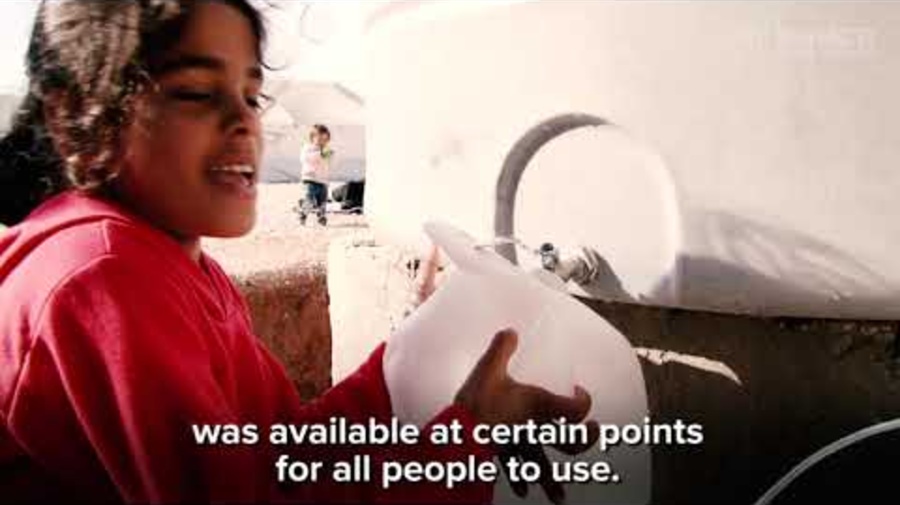EPISODE 3: Thirst for life
EPISODE 3: Thirst for life
How do we ensure that there is sufficient water every day for families like Farida’s?
Our colleagues Dina and Ihab will explain you in episode 3 how we tackle this enormous logistical challenge:
Whenever UNHCR provides humanitarian aid, water is a top priority
When thousands of people forced to flee are looking for safety in the same place, the existing water supplies and sewages can get overloaded fast. On top of that, in war torn areas the existing water infrastructure is often demolished, even before large groups of people can make use of them.
Short term and long term solutions
To ensure that families forced to flee have enough water supply, we use water tanks and water pumps, which can pump water out of existing lakes and rivers. To ensure long term water supply, we look for durable solutions. In some countries this means that we help repair the demolished infrastructure. In other countries we build water wells. We always ensure that the water is filtered and potable.
A little bit awkward, but none the less of vital importance
Discharging polluted water is not the most appealing subject, but clean toilets and a safe discharge of excrements is as important as ensuring a supply of clean water. This is why UNHCR also takes care toilets and septic tanks. This drastically reduces the risks of an infection and the presence of vermin.
You make it possible that we can tackle this big challenge. Thank you!
“We were challenged to build water pipes and sewages for ten thousands of people. There was nothing in the space where Za’atari is built now, and we had to have all this infrastructure ready in no time.
Amin Bhai, UNHCR WASH (water and hygiene) officer in Jordan


